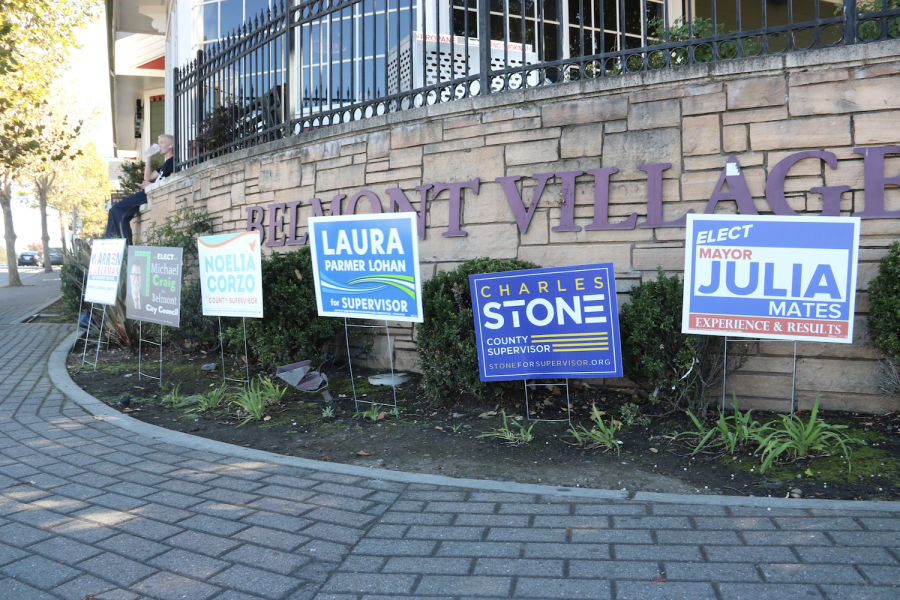The posters fluttered in the wind. They were placed all over town; on poles, in schools, and in neighborhoods. They were designed and printed to perfection, considered art, even. The dull red color and bold block letters stared back at the young boy. As he picked up the paper, he felt a sense of community, an urge to be like the posing man on the form holding up a flag proudly.
There’s a great deal of pride in joining hands over one’s homeland. Knowing that his passion could be put to work in real-life was eye-opening for the boy and others similar to him. In this sense, it is understandable why he joined the party advertised on the poster, and they trained him to fight for what they believed.
It all started with that feeling of community—the inspiration that came from the blond-haired, blue-eyed man on the poster standing for his faction. This is how millions of young boys joined Hitler Youth.
Rather than being spread through physical posters like in the 1940s, information is now presented through online media platforms. Life with the internet has become fast-paced, which improves the relevancy of urgent news being presented to the public. However, this also causes less time to thoroughly fact-check.
“I get most of my information from videos I see on Tiktok or from Twitter,” said Ainsley Colt, a junior at Carlmont.
According to the Google Play Store, as of 2022, TikTok alone has over 1 billion downloads, making it one of the fastest-rising social media platforms in terms of popularity.
The issue stems from the dynamics of followers and influencers. Using the media makes it easier for any person to become famous, and their platforms are able to reach millions of people at a time. The large audience that influencers reach becomes problematic when they incorporate bias into their content.
“I often wonder if people who do this know they are doing this, or are confused about the difference between facts and opinions,” said Jarrod Harrison, a history teacher at Carlmont.
Propaganda is a powerful use of the media due to the ability of people to spread information through disguised bias. Most people don’t even recognize when they are consuming propaganda because it has been so integrated into everyday life.
An extreme example of this occurred in the 1940s, during the Holocaust, when the Nazis successfully got millions of people, including young kids, to join their nation.
“Students were taught the information that Nazis wanted them to learn, rather than facts based on science and history,” Harrison said.
Aside from indoctrination in school, Nazi groups used posters and pamphlets to convince young men why they should join their political party. They often tried to portray the Jewish community as villains or make themselves appear heroes to get people to join.
Brown Minimalist App Development Infographic by 810464
“The Nazis also reinforced their propaganda in the popular culture through radio, literature, and film, and banned alternate points of view,” Harrison said. “They were only given one biased side rather than given multiple perspectives and taught critical thinking skills.”
While the Holocaust officially ended in 1945, the use of propaganda did not. The post-World War II world included methods like newspapers, radios, films, and nightly news to spread information by technology rather than just word of mouth.
During this time, sources more easily broadcasted propaganda to a diverse audience. Fewer restrictions and more television channels brought people a wide variety of information.
Propaganda is spread more easily today because of the simplicity of posting on social media compared to the cost of printing.
“It’s really expensive to print a newspaper every day, specifically in national newspapers. And so, if you are not reputable, that becomes pretty obvious pretty quick. And if you are spreading misinformation people are going to stop reading it, and that’s going to eliminate your bottom line,” said Erik Migdail, an English teacher at Carlmont.
However, today the ability to eliminate sources of misinformation is much more difficult, due to the fact that, if banned, a user on social media can make a new account and continue posting content.
“The spread of misinformation and the degradation of a founding and shared sense of epistemology both makes me sad and deeply alarmed,” Migdail said. “We are in a real crisis moment.”
The creation of the internet and mobile devices has revolutionized how media is presented to society. Modernization has allowed for a more efficient way for people to consume advertisements and information; however, due to this influx of easy-access content, the spread of misinformation has only increased as well.
“Much of the internet is unregulated so it is sort of a wild west as far as accuracy,” Harrison said.
Because of the stronghold influencers have on their followers, politicians will sometimes even partner with them. During the COVID-19 pandemic, Joe Biden wanted to encourage American citizens to get vaccinated. He partnered with singer, actress, and internet celebrity, Olivia Rodrigo to persuade teens to get the vaccine.
According to an article by the Center for Media Engagement at the University of Texas Austin, “When politicians are publicly endorsed by influencers and celebrities, they can benefit from increased visibility, but the central goal is often to transfer the trust followers feel towards the influencer to a candidate or cause.”
Convenience also plays a vital role in this cause of the spread of misinformation.
“It’s so easy to post things on social media. Most things aren’t fact-checked before they’re posted and because of this, it’s so easy for people to get in a hole of wrong information,” Colt said.
In contrast to pre-internet propaganda, online media is more convenient for people to post information on specific topics–no verification or fact-checking is needed. While there is a general rule of “don’t believe everything you see on the internet,” it’s hard not to when the online world has blurred the lines between truth and exaggerated news. This has caused society to quickly believe everything they see online.
“I think people are drawn to influencers and getting other people’s opinions because it takes some of the pressure off of thinking for yourself, and it means that the decision you make isn’t really yours so you have someone else to blame if something goes wrong,” Colt said.
This problem is important to recognize because the consumption of propaganda and misinformation through social media often goes unnoticed. Followers will make decisions and change their opinions based on who they watch online.
“Influencers definitely have the ability to change others’ opinions. They’re called ‘influencers’ for a reason. They use their platforms to influence others’ opinions, typically to make them match theirs or make people dislike the same things,” Colt said.
Physically printed posters and signs are viewed as more obvious strategies for propaganda, but they have the same goals as those on the internet. The modernization of society has also increased the desire for individualism and expressing one’s own opinions. As a result, the pressure of creating subtle propaganda has also increased, especially for politics, leading many creators to turn to the online community.
According to Ned Price, a State Department spokesman, in a PBS news conference, “Russia has covertly spent more than $300 million since 2014 to try to influence politics and other officials in more than two dozen countries.”
However, the spread of misinformation and the use of propaganda is not an issue based on location or time period. It evolves along with society and adapts to the current technology of the world to ensure that indoctrination goes unnoticed, making it all the more dangerous.
“With the wide availability of social media and the relative lack of media literacy skills, everyone from even a young age is exposed to propaganda and misinformation and social media,” Harrison said.














